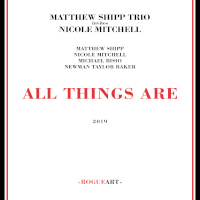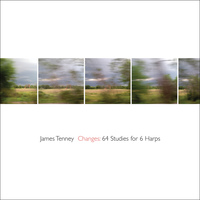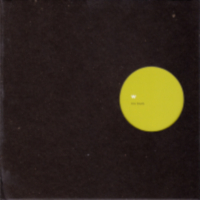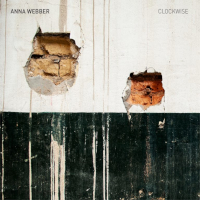Moment's Notice
Reviews of Recent Recordings
(continued)
The OGJB Quartet
Bamako
TUM CD 050
 The all-star OGJB Quartet, featuring veteran composer-improvisers saxophonist Oliver Lake, trumpeter Graham Haynes, bassist Joe Fonda, and drummer Barry Altschul, plays urgent and passionate music with calm authority and assurance. Pretty much every track is a model of how the music should be done. Fonda’s “Listen to Dr. Cornel West” makes its way from an explosive blast of free rhythm and energy to a swinging medium tempo, connecting contrasting sections with written parts and improvising. The spontaneous invention features tightly balanced group improvisation, a Fonda solo with an unflagging flow of melodic ideas, and a Haynes solo that infuses a folksy Don Cherry bounce into his freebopping phrases. “Bamako” incorporates African instruments into a nontraditional setting that partakes of both Western and non-western musics. It evokes the capital city of Mali with mbira and dousn’gouni, while the fragmented imagery of Lake’s poetry conjures up a complex modernity and Fonda’s bass provides a melancholy undercurrent. Lake’s “Stick” has the zig-zag shape of a tree branch and the group improvisation finds the band lobbing sharp phrases among themselves in a colorful musical game of catch. Two other Lake compositions, “Is It Alright?” and “3 Phrase 09” also bring out some of the best collective playing on the album, with the band fitting together brilliant hued notes and irregularly shaped notes like stained glass pieces interlocking to create a complete picture. Altschul revives an early piece of his, “Be Out S’Cool,” for some relaxed freely swinging music, and contributes “Just a Simple Song,” which uses modest building blocks to construct an intricate structure. On the two group improvisations, “OGJB #1 and #2” every gesture is meaningful and played with full awareness of its context within the group. At the same time, individual contributions are also played purposefully to further the development of the music. Every element of this masterful album contributes to that feeling of inevitability and surprise that is the hallmark of great jazz.
The all-star OGJB Quartet, featuring veteran composer-improvisers saxophonist Oliver Lake, trumpeter Graham Haynes, bassist Joe Fonda, and drummer Barry Altschul, plays urgent and passionate music with calm authority and assurance. Pretty much every track is a model of how the music should be done. Fonda’s “Listen to Dr. Cornel West” makes its way from an explosive blast of free rhythm and energy to a swinging medium tempo, connecting contrasting sections with written parts and improvising. The spontaneous invention features tightly balanced group improvisation, a Fonda solo with an unflagging flow of melodic ideas, and a Haynes solo that infuses a folksy Don Cherry bounce into his freebopping phrases. “Bamako” incorporates African instruments into a nontraditional setting that partakes of both Western and non-western musics. It evokes the capital city of Mali with mbira and dousn’gouni, while the fragmented imagery of Lake’s poetry conjures up a complex modernity and Fonda’s bass provides a melancholy undercurrent. Lake’s “Stick” has the zig-zag shape of a tree branch and the group improvisation finds the band lobbing sharp phrases among themselves in a colorful musical game of catch. Two other Lake compositions, “Is It Alright?” and “3 Phrase 09” also bring out some of the best collective playing on the album, with the band fitting together brilliant hued notes and irregularly shaped notes like stained glass pieces interlocking to create a complete picture. Altschul revives an early piece of his, “Be Out S’Cool,” for some relaxed freely swinging music, and contributes “Just a Simple Song,” which uses modest building blocks to construct an intricate structure. On the two group improvisations, “OGJB #1 and #2” every gesture is meaningful and played with full awareness of its context within the group. At the same time, individual contributions are also played purposefully to further the development of the music. Every element of this masterful album contributes to that feeling of inevitability and surprise that is the hallmark of great jazz.
–Ed Hazell
Matthew Shipp Trio + Nicole Mitchell
All Things Are
RogueArt ROG-0088
 All Things Are, the first meeting between Matthew Shipp’s Trio and flautist Nicole Mitchell, is more confab than collaboration, revealing former AACM President Mitchell as the date’s wildcard. Each party seeks common ground, although Shipp’s working trio shares a well-established rapport; Michael Bisio has been the pianist’s primary bassist for a decade, while Newman Taylor Baker replaced longstanding drummer Whit Dickey a few years ago. Baker is well-attuned to Bisio’s longstanding camaraderie with Shipp; together they blur the line between accompanist and soloist, expanding the rhythm section’s role in the process.
All Things Are, the first meeting between Matthew Shipp’s Trio and flautist Nicole Mitchell, is more confab than collaboration, revealing former AACM President Mitchell as the date’s wildcard. Each party seeks common ground, although Shipp’s working trio shares a well-established rapport; Michael Bisio has been the pianist’s primary bassist for a decade, while Newman Taylor Baker replaced longstanding drummer Whit Dickey a few years ago. Baker is well-attuned to Bisio’s longstanding camaraderie with Shipp; together they blur the line between accompanist and soloist, expanding the rhythm section’s role in the process.
Focusing on dynamics and pure sound, these nine compositions (all written by Shipp) explore an array of stylistic territory by varied combinations of personnel. This approach has become Shipp’s modus operandi, enabling each musician to demonstrate their improvisational mettle in episodes that range in mood from brooding introspection to ecstatic fervor. The titular cut spotlights Bisio’s sinewy arco, while “Fire and Air” is dominated by Baker’s skittering percussion. Shipp’s circuitous cadences ebb and flow with a singular logic, whether interweaving minimalist motifs into ravishing romantic contours on the dramatic piano soliloquy “Hidden Essence,” or navigating labyrinthine detours with rapturous glee alongside Bisio in the careening duo abstraction “Blossom.” “Well Spring” finds Shipp and Mitchell alone together; improvising in tandem, their distinctive voices pursue harmony in a tense rubato ballad that elicits a panoramic range of tone colors.
Mitchell’s expressive flute complements Shipp’s incandescent pianism, producing ghostly harmonics; Bisio’s throbbing bass and Baker’s rumbling percussion underscore her evocative musings, lending the proceedings a rich chiaroscuro from the start of the tempestuous opener, “Elements.” Using alternate fingerings and over-blown vocalizations, “It” demonstrates Mitchell’s mastery over extended techniques, while more rhythmically assertive fare, like the driving “Void Of Ground,” reveals her ability to negotiate the dizzying grooves of otherworldly funk. Her unaccompanied coda on the rhapsodic title track confirms her status as foremost flutist of her generation with quicksilver cadences that seamlessly incorporate reverberating glissandi, diaphanous altissimo, and intervallic trills.
Balancing hushed impressionism with brash expressionism, the quartet veers from pointillist tone poems to frenetic deconstructions. In keeping with Shipp’s democratic intentions, each musician’s role is crucial; Mitchell’s exotic contributions channel non-Western tonalities, making an effective contrast to the leader’s neoclassical tendencies, while Bisio and Baker alternate propulsive timekeeping with understated shading and texture. Bolstered by their idiosyncratic contributions, All Things Are is a shared high water mark for each of these major artists.
–Troy Collins
Sounds of Liberation
Unreleased [Columbia University 1973]
Dogtown Records (no number)
 There’s a vein of social commentary and spiritual uplift that runs very deep in African American music. It’s often inseparable from the music’s function as entertainment, as music for dancing or socializing. Soul music excelled at danceable message music – the obvious example is Marvin Gaye’s “What’s Going On” – but jazz occasionally tapped into this strain of the music, too. In an attempt to reach a wider audience with their message, jazz players sometimes turn to popular music forms for a fusion that delivered a serious message with a soul or funk kick. The recently rediscovered Unreleased (Columbia University 1973) shows just how well Philadelphia’s Sounds of Liberation straddled this improvised art music-soul-funk divide.
There’s a vein of social commentary and spiritual uplift that runs very deep in African American music. It’s often inseparable from the music’s function as entertainment, as music for dancing or socializing. Soul music excelled at danceable message music – the obvious example is Marvin Gaye’s “What’s Going On” – but jazz occasionally tapped into this strain of the music, too. In an attempt to reach a wider audience with their message, jazz players sometimes turn to popular music forms for a fusion that delivered a serious message with a soul or funk kick. The recently rediscovered Unreleased (Columbia University 1973) shows just how well Philadelphia’s Sounds of Liberation straddled this improvised art music-soul-funk divide.
Its principal soloists and composers were musicians with solid free-jazz credentials – saxophonist Byard Lancaster, vibraphonist Khan Jamal, guitarist Monnette Sudler, and drummer Dwight James. But in the context of Sounds of Liberation, they honored funk, soul, and Latin rhythms while insisting that the band members’ proclivities toward “out” playing were part of a continuum of African American music. Much like Horace Tapscott in L.A. or the Black Artists Group in St. Louis, they considered themselves musician-activists and they had the courage of their convictions. They were never widely known in part because they played their music of community uplift in their community – the daycare and community centers, high schools, parks, and prisons of Philadelphia. The only album the band released during its lifetime was a self-titled DIY production on Dogtown Records, which was later reissued by Porter Records. (An album by what amounted to the band released Drum Dance to the Motherland under Khan Jamal’s name.)
This new find is a real gem, full of fire and funk, and uncompromising in both its commitment to the groove and to jazz soloing. “Thoughts” opens the album with an Africanized beat that evokes the ancestors while speaking to the present. The vibes, bass, congas, percussion, and trap kit interact and complicate the beat, but never obscure it. Horns add jazz colors. Sudler, who’s a powerhouse in the rhythm section throughout the album, unleashes a heavy blues-jazz solo. Her tone has an initial sting but a warm round finish, so her phrases have a keen bite but also sensuality. Jamal creates tension and release by alternating graceful cascades of notes with short phrases that end abruptly with a clank. “Badi” unfolds over a similar beat and is also an example of how the band could rally around a groove and be absorbed into it.
“Keno” broadens the music’s roots to embrace an Afro-Latin beat. One of the things that made Sounds of Liberation an exemplar of soul-jazz fusion was their ability to play different rhythms with conviction and skill. The music always sounds lived in, not learned. And although they’re jazz musicians, who generally like to complicate and modify their materials, they also know how to lay in the groove and let it ride.
“Sweet Evil Mist (Rib Crib)” and “New Horizons (Back Streets of Heaven)” provide some of the hottest fire music on the disc, played over a funk and an Afro-Cuban beat respectively. Lancaster overdubbed flute after the initial date at Columbia’s radio station, WKCR, and on “Sweet Evil Mist” his flute bubbles vibrantly over the beat. He then turns to alto for gritty, melodic improvising that interposes saxophone cries and wails that tread a line between free jazz and bar walking. “New Horizons” features a quartet of singers (also dubbed in at a later date) for a salsa-soul music feeling and Lancaster’s coruscating wails and pithy riffing give it a sermonizing tinge.
This is a music that delivers its consciousness-raising message through the pleasure of the groove and the power of improvisation.
–Ed Hazell
Karlheinz Stockhausen
Historic First Recordings of the Klavierst�cke I-VIII & XI (4 Versions)
hat[now]art CD 172
 Karlheinz Stockhausen’s monumental series of solo piano pieces, Klavierstücke, are inextricably linked to pianist David Tudor. While Stockhausen began composing the cycle in 1952, before he met Tudor, the middle pieces and particularly “Klavierstücke XI” were composed or re-worked specifically for him. Stockhausen originally planned to write 21 pieces grouped into six sets. The first set (I – IV) was written between 1952 and 1953, the second (V – VIII and XI) between 1954 and 1956, IX and X were finished in 1961 and then came a long break. He began working on additional cycles in the late ‘70s finishing eight more, some of which were written for synthesizer and electronic keyboards while also incorporating tape and sound projection.
Karlheinz Stockhausen’s monumental series of solo piano pieces, Klavierstücke, are inextricably linked to pianist David Tudor. While Stockhausen began composing the cycle in 1952, before he met Tudor, the middle pieces and particularly “Klavierstücke XI” were composed or re-worked specifically for him. Stockhausen originally planned to write 21 pieces grouped into six sets. The first set (I – IV) was written between 1952 and 1953, the second (V – VIII and XI) between 1954 and 1956, IX and X were finished in 1961 and then came a long break. He began working on additional cycles in the late ‘70s finishing eight more, some of which were written for synthesizer and electronic keyboards while also incorporating tape and sound projection.
This release re-issues the first recordings of the cycle made in 1958 and 1959, documenting all of the pieces that had been completed up until then. Around the time of the recording, Tudor was traveling frequently in Europe and the US, performing the post-war avant-garde piano repertoire, much written expressly for him. He corresponded regularly with Stockhausen about the composer’s scores, digging into the notations and inspiring Stockhausen to revise the compositions based on Tudor’s ability to navigate the complexities of the pieces. Listen to this collection and one can hear how the compositions open up from the compact, pointillism of “I” through “IV” to the expansive complexities of “XI.”
Tudor tackles the first cycle of pieces with assurance and clarity of inflection. In his liner notes, Kyle Gann describes the pieces as a transition “from a music in which each note stood by itself to a music of gestures unified by articulation, rhythm, or dynamics.” All are fairly short in duration, from “I” at just shy of 3 minutes long to “III,” which is a terse 39 seconds long. The pianist’s finely-honed sense of attack and decay imbue their angular, jagged trajectories with a focused sense of momentum. The second cycle is where things really take off. Here, Stockhausen opens the structures up, taking the kernels of ideas from the first set and using them as building blocks within the unfolding, multi-dimensional forms of the longer pieces. Dense clusters and thrashing flurries play out against central longer notes in sections of varying tempos. The 16-minute “Klavierstücke VI” is a particular standout with its graphic representation of tempos shifts. Gann explains that “moving lines above the music in the score to ‘No. VI’ show the pianist when to fluctuate in a series of tempos” demanding that the performer invest in the unfolding flow of the piece which Tudor handles with aplomb.
But if all this recording captured were the four versions of “Klavierstücke XI,” ranging from 7 to 9-1/2 minutes, it would be invaluable. The graphic layout of the score consists of 19 fragments which are to be played in any order chosen by the performer. Each fragment is followed in the score by tempo and dynamic to be used for the next fragment. The performer may begin with any fragment, and continue to any other, proceeding through the grid until a fragment has been reached for the third time, when the performance ends. Tudor’s mastery of performances of pieces with chance-based structures by composers like Cage, Feldman, and Earle Brown allowed him to traverse the piece with utter assurance. There’s never a moment in any of the four performances where Tudor’s triangulation of the score subsumes the ultimate clarity of his readings. His unequivocal patience and absorption in the interpretation of the structure is unwavering. He builds phrases which are parsed by silence. Flurried notes cascade against each other, countered by clusters that are sounded and then left to decay. Each stands as masterful instantiation of Stockhausen’s labyrinthine work.
By the mid-‘60s, Tudor had grown tired of constant touring and interpreting scores written for him by others. He was quoted as saying that “I felt like an actor playing the same role.” In the notes to Music from the Tudorfest: San Francisco Tape Music Center, 1964, his fatigue with Stockhausen’s music is recounted. Tudor toured the US for the first five months of 1964 with the composer and was scheduled to record “Klavierstücke” for Columbia Records but ended up cancelling the session. He corresponded to Pauline Oliveros that “his music seems a weariness to the flesh & to the spirit,” making this recording and re-issue all the more critical in capturing the period when the two were inextricably joined at creating this pivotal body of work.
–Michael Rosenstein
James Tenney
Changes: 64 Studies for 6 Harps
New World Records 80810-2
 New World Records continues their invaluable series of releases by composer James Tenney with this new 2-CD set devoted to Tenney’s Changes: 64 Studies for 6 Harps. Composed in 1985 when he was teaching at York University in Toronto Canada, the piece marked a return to computer-aided, algorithmic composition. Using two separate FORTRAN IV programs, each study is assigned a unique combination of two of the 64 I Ching hexagrams to define the beginning and ending parametric states of the 64 pieces. The instrumentation consists of six harps with strings tuned a 6th-tone apart to form a kind of 72-tone-per-octave mega-harp. Each study functions as a sort of microcosm, looking at trajectories of harmonics, dynamics, pitch range, density, and temporal density/tempo. Some are studies of one area while others delve into simultaneous overlapping areas.
New World Records continues their invaluable series of releases by composer James Tenney with this new 2-CD set devoted to Tenney’s Changes: 64 Studies for 6 Harps. Composed in 1985 when he was teaching at York University in Toronto Canada, the piece marked a return to computer-aided, algorithmic composition. Using two separate FORTRAN IV programs, each study is assigned a unique combination of two of the 64 I Ching hexagrams to define the beginning and ending parametric states of the 64 pieces. The instrumentation consists of six harps with strings tuned a 6th-tone apart to form a kind of 72-tone-per-octave mega-harp. Each study functions as a sort of microcosm, looking at trajectories of harmonics, dynamics, pitch range, density, and temporal density/tempo. Some are studies of one area while others delve into simultaneous overlapping areas.
Tenney likened the series to the 24 “Preludes and Fugues” of J. S. Bach's Well-Tempered Clavier, though admitted that few listeners would readily draw that comparison. In an interview Brian Belet conducted with Tenney (published in Perspectives in New Music Vol. 25, No. 1/2, pp. 459-466), the composer talks about the underlying harmonic tenets of the piece. “When listening to the harp piece, one seldom hears ‘microtones’ even though there are seventy-two pitches in each octave. It’s organized in such a way that you seldom hear adjacent pitches in that scale, so the sense of small intervals is not very prominent ... This is a tremendous adventure. One of the exciting things about being involved with new tuning systems is that it is relatively new again ... Since Cage’s revolution, we have a situation where notation is a composition variable. And now intonation is a composition variable.”
He went on to explain, “I tried to organize the piece so that there were as few arbitrary decisions as possible involved with these studies. I wanted to find a way to let the hexagrams from the I Ching define as much as possible ... A denser texture could then be applied to a shorter study, and a sparser texture to a longer study. And similarly, the vertical density, certain properties already determined by the hexagram would then, in turn, determine the general average vertical density. The idea was to make it some kind of synergistic mechanism, all somehow self-determining.”
For all the complexities programmed into the computer to generate the underlying data, the actual task of transcribing that into scores which could be used for performance was done in a painstaking process. Tenney made computer code printouts of all 64 studies during his lifetime but only completed transcriptions of the first 16. Ten years later, a student volunteered to transcribe the second set of 16 but the final set of 32 weren’t completed until after his death. And the full set of pieces wasn’t performed until 2017, weeks before the recording of this release.
Which gets to the release itself. With 64 studies, ranging from shy of 2 minutes to just over 3 minutes in length, one quickly becomes immersed in the overall flow of the series. Similar in a way to a gamelan, the 6 harps function as a single instrument with interlocking parts seamlessly dispatched between the players. The harmonic complexities of the studies are so totally subsumed by the inner logic of each piece that over the course of the 2 hour and 20-minute recording, the listener becomes fully absorbed into the evolving sound world. The general pacing of pieces helps immensely. Cleanly articulated notes gather against the distinctive resonance and decay of the harps. In lesser hands (both compositionally and on the part of the performers) the lushness of timbre and innate romanticism of the sound of concert harps could easily result in a muddle. Instead, the performers, all of whom are well versed in the performance of contemporary composition, draw out the elemental structures of each of the pieces, revealing the bracing lucidity of Tenney’s score. Kudos to the organizational effort it took place to pull this all together and to New World records for capturing it with such sonic clarity.
–Michael Rosenstein
Peter Thoegersen
Three Pieces in Polytempic Polymicrotonality
New World 80812-2
 It is a case of history rhyming. The title of Peter Thoegersen’s album of synthesizer constructions suggests a relationship to Charles Ives’ Three Pieces in Quarter Tones; but, the composition that most directly laid predicates for Three Pieces in Polytempic Polymicrotonality is Ives’ unfinished Universe Symphony, in its use of multiple microtonal scales and polyrhythms. Not surprising, coming from a drummer who can play an independent rhythm with each of his four limbs.
It is a case of history rhyming. The title of Peter Thoegersen’s album of synthesizer constructions suggests a relationship to Charles Ives’ Three Pieces in Quarter Tones; but, the composition that most directly laid predicates for Three Pieces in Polytempic Polymicrotonality is Ives’ unfinished Universe Symphony, in its use of multiple microtonal scales and polyrhythms. Not surprising, coming from a drummer who can play an independent rhythm with each of his four limbs.
Composed between 2013 and ‘18, these pieces also echo the extra-human virtuosity of Conlon Nancarrow’s studies for player piano, as Thoegersen’s music first presents as a blizzard of information. Wading through the erudite references to Fibonacci numbers, ancient Greek music and Bartók’s intervallic structures in Kyle Gann’s booklet notes is nominally helpful, primarily because there is something in Theogersen’s music that makes the listener’s inner compass spin wildly, despite these constellations being placed as guidance.
Usually, the critic’s bromide that such challenging music rewards committed listening infers a rather short-term process of getting up to speed with the material. That is not the case with Three Pieces in Polytempic Polymicrotonality. There is no skeleton key that will suddenly unlock the complexities of his music and tidily lay them out. However, what is initially baffling about Theogersen’s music becomes enticing, becoming a strong incentive to dig deeper into it.
–Bill Shoemaker
Trio Blurb
W
Evil Rabbit Records ERR 27
 Trio Blurb – guitarist John Russell, vocalist Maggie Nicols, and violinist and vocalist Mia Zabelka – formed in December 2009 and have performed together on a semi-regular basis as logistics have allowed. UK-based Russell and Nicols have been working together for over four decades in a multitude of ad hoc settings from Fête Quaqua to groups lead by trombonist Günter Christmann and various collaborations as part of Russell’s Mopomoso series. Zabelka is a sound artist and violinist from Vienna having worked in a variety of contexts, from composition to improvisation including collaborations with musicians as diverse as John Zorn, Malcolm Goldstein, Jon Rose, and the Viennese collective Reform Art Unit. This second release by the trio captures two live sets from 2017 and 2018 at locations around London.
Trio Blurb – guitarist John Russell, vocalist Maggie Nicols, and violinist and vocalist Mia Zabelka – formed in December 2009 and have performed together on a semi-regular basis as logistics have allowed. UK-based Russell and Nicols have been working together for over four decades in a multitude of ad hoc settings from Fête Quaqua to groups lead by trombonist Günter Christmann and various collaborations as part of Russell’s Mopomoso series. Zabelka is a sound artist and violinist from Vienna having worked in a variety of contexts, from composition to improvisation including collaborations with musicians as diverse as John Zorn, Malcolm Goldstein, Jon Rose, and the Viennese collective Reform Art Unit. This second release by the trio captures two live sets from 2017 and 2018 at locations around London.
The first 20-minute improvisation, titled “wilcumestowe” is Middle English for “the place of welcome” as well as the North East London neighborhood where the piece was recorded. It starts off with Nicols’ dulcet, floating vocal lines countered with the spare counterpoint of Russell’s dry guitar scrabbles and Zabelka’s arco sputters, patiently building momentum from there. The three are keenly aware of balance of dynamics while reveling in the complimentary timbres of the intimate, acoustic settings. When Zabelka adds in vocals a third of the way through, she and Nicols take off on an explosive arc sparked along by Russell’s saw-toothed angularities. But the three are canny enough to back off, leaving space for warbles, hums, and whispers against steely guitar strings and darting, warm violin arco. The second piece, titled “work and wild,” traverses similar ground across the ensuing 27-minutes. This time though, they push their playing a bit more and let a sense of whimsy come in. Nicols’ vocals make fiery leaps and Zabelka’s violin playing takes on a stronger presence here, though never overwhelming her partners. Russell provides an unflappable fulcrum as the three duck and weave, building dynamic peaks with an astute collective ear.
–Michael Rosenstein
Anna Webber
Clockwise
Pi Recordings PI79
 Name checking Iannis Xenakis, Morton Feldman, Edgard Varése, Karlheinz Stockhausen, Milton Babbitt, and John Cage for a program of ensemble improvisation isn’t all that rare these days. But building compositional forms for group improvisation out of percussion pieces by those composers is another thing, particularly for a reed player. But Anna Webber has done just that with this release for her sextet featuring Jeremy Viner on reeds, trombonist Jacob Garchik, cellist Christopher Hoffman, pianist Matt Mitchell, bassist Chris Tordini, and drummer/percussionist Ches Smith. The nine original compositions on Clockwise do far more than just name-check 20th Century masters, slavishly transpose scores for ensemble, or bolt on abstract compositional concepts to jazz ensemble. Instead, Webber gets inside of the source pieces, pulls out their timbral and structural foundations and mines them for pieces that buck, bolt, and sometimes even swing (in that post-Braxton/Threadgill sense of time.)
Name checking Iannis Xenakis, Morton Feldman, Edgard Varése, Karlheinz Stockhausen, Milton Babbitt, and John Cage for a program of ensemble improvisation isn’t all that rare these days. But building compositional forms for group improvisation out of percussion pieces by those composers is another thing, particularly for a reed player. But Anna Webber has done just that with this release for her sextet featuring Jeremy Viner on reeds, trombonist Jacob Garchik, cellist Christopher Hoffman, pianist Matt Mitchell, bassist Chris Tordini, and drummer/percussionist Ches Smith. The nine original compositions on Clockwise do far more than just name-check 20th Century masters, slavishly transpose scores for ensemble, or bolt on abstract compositional concepts to jazz ensemble. Instead, Webber gets inside of the source pieces, pulls out their timbral and structural foundations and mines them for pieces that buck, bolt, and sometimes even swing (in that post-Braxton/Threadgill sense of time.)
Things kick off with “Kore II” and conclude with “Kore I,” both of which play off of Xenakis’ “Persephassa” for six percussionists, restructuring the distributed timbral volleys of the original into hocketed stop-start angularity for the opener and a more brooding, measured drive for the closer. In each case, Tordini and Smith keep the innerworkings of an open, underlying momentum on steady track as the ensemble voices play off of each other with special kudos to Garchik’s effervescing solo on the closer. “Idiom II” is a Webber original that creates a buzzing hive of microtonality against a shifting meter, opening up for solo sections that overlap and feed across each other.
Webber’s take on Morton Feldman’s “King of Denmark,” a short piece for solo percussionist where no sticks or mallets are to be used, shows up in three versions. The brief second version is a particular standout, with Smith’s abraded percussion colored with abstracted ensemble shadings. “Hologram Best” is another miniature, this time drawing on John Cage’s “Third Construction (In Metal)” where lines are intertwined with a spiraling flurry, building density and velocity with arresting clarity. The title piece plays off of Stockhausen’s “Zyklus” and cycles its way with stately constancy across the ensemble, with some strong breathy flute playing by the leader. “Array,” based on Milton Babbit’s solo snare piece “Homily” sizzles and sputters with an insistent forward thrust as flute, piano, tenor, trombone, and cello pop in and out of the constantly shifting focus against Smith’s insistent brushwork and Tordini’s countervailing hopscotch lines. Bereft of specific notions of melodic line, the piece still percolates with an infectious, through-lyrical flow.
Taking off from their essential recordings by Henry Threadgill, Pi Recordings has been building a solid catalog of musicians leading mid-sized ensembles including Steve Lehman, Jonathan Finlayson, and Liberty Ellman. This inaugural release by Anna Webber is an impressive one and a formidable addition to the label.
–Michael Rosenstein